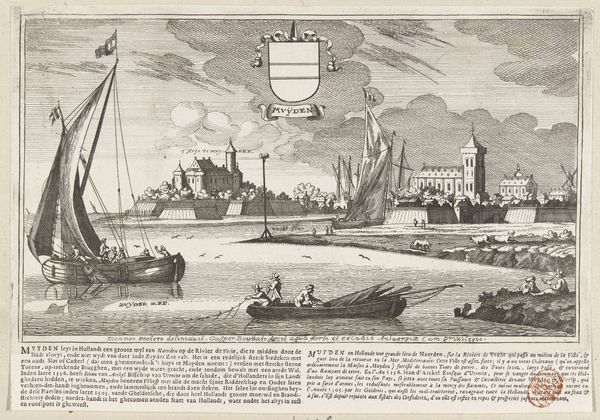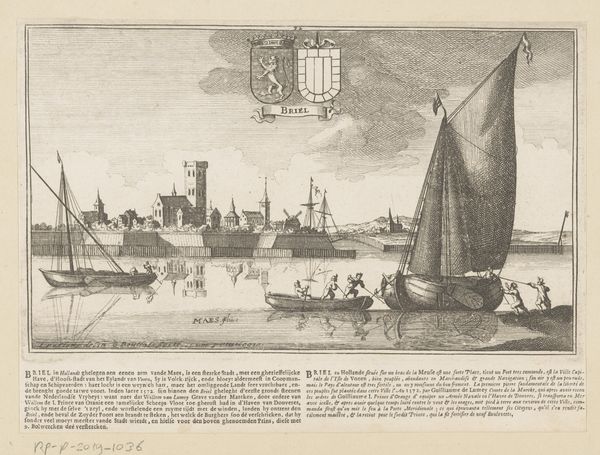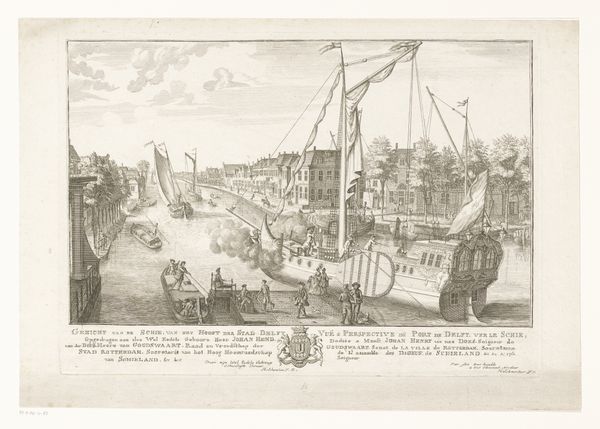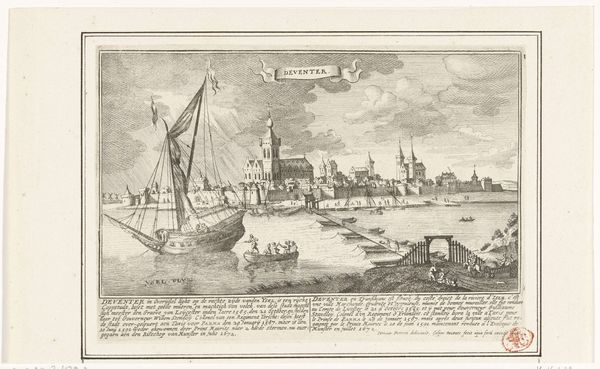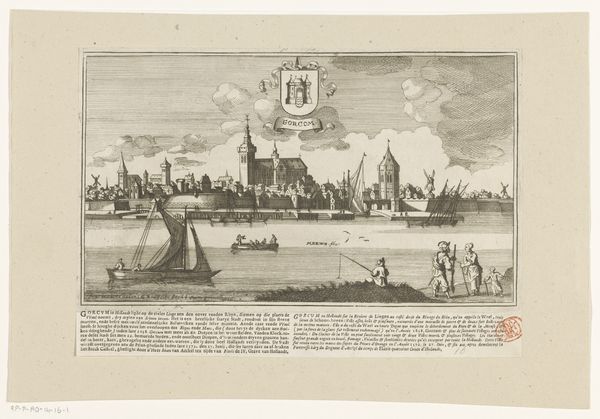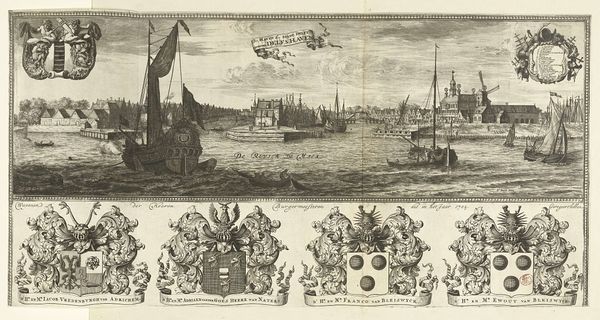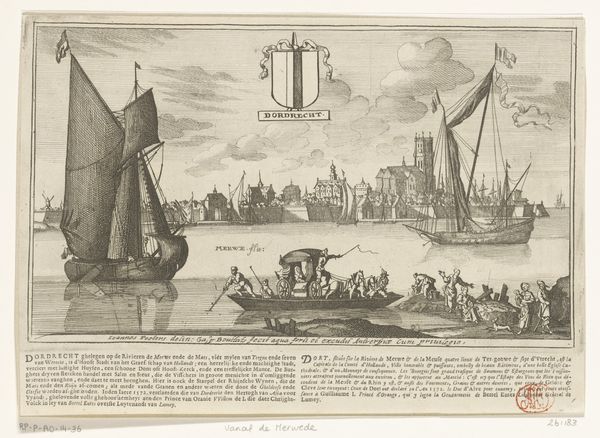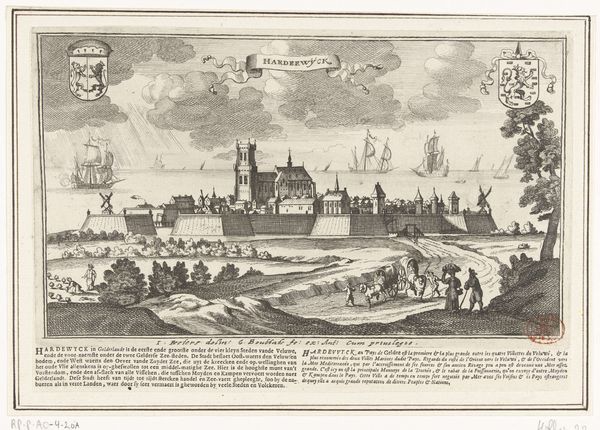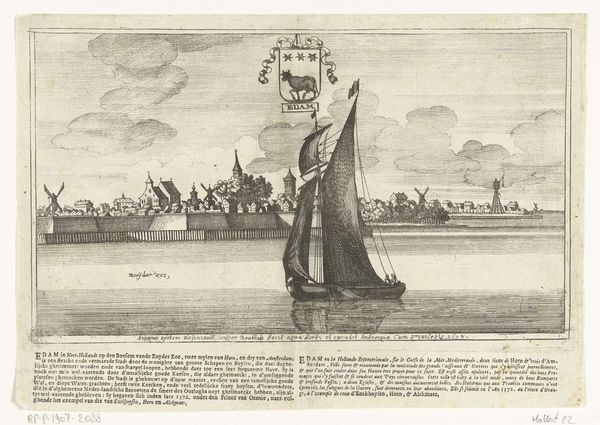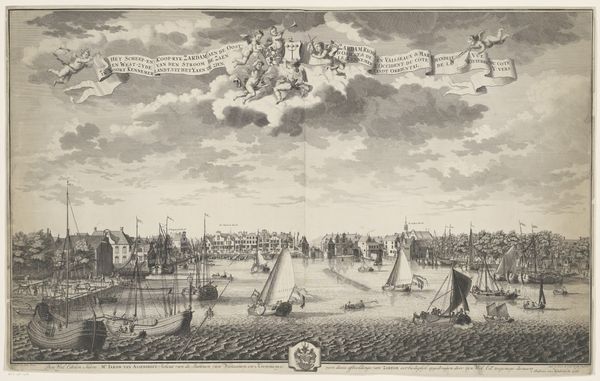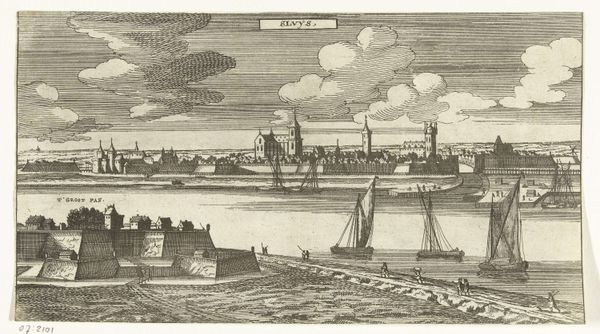
print, engraving
#
baroque
#
dutch-golden-age
# print
#
old engraving style
#
landscape
#
cityscape
#
engraving
#
realism
Dimensions: height 147 mm, width 254 mm
Copyright: Rijks Museum: Open Domain
Editor: This is "Gezicht op Schiedam," an engraving by Gaspar Bouttats, from 1679. I’m immediately struck by how meticulously the city is rendered; the level of detail in each building is really something! What’s your take on this cityscape? Curator: For me, this image is a potent symbolic rendering of Dutch identity in the Golden Age. The ships, of course, signal trade, exploration, and a burgeoning global presence. The city itself, with its prominent church spire, represents not just earthly commerce, but also a spiritual dimension. Note the position of the coat-of-arms. Editor: The coat-of-arms…above the scene itself. Is that common? What does it mean to place it so prominently? Curator: The escutcheon's high placement emphasizes Schiedam's civic pride and self-governance. Moreover, the lion depicted suggests strength and authority, key aspirations of the Dutch Republic at that time. Can you see any other details that could also tell us something about the time period? Editor: I guess, the windmill symbolizes industry, specifically the grinding of grain, so a sign of productivity… and what appears to be a gallows? I wouldn’t have noticed if you hadn’t encouraged a closer look. Curator: Precisely! A reminder of the harsh realities and the civic order maintained within. Such inclusions acted as potent visual reminders, shaping cultural memory and societal expectations. It invites reflections on collective and personal identities and their connection to place. Editor: I see what you mean. There's much more to it than just a pretty view! I didn’t realize how many layers of meaning an engraving could hold. Curator: Exactly, understanding visual language enriches our appreciation of not just art, but cultural and social histories as well.
Comments
No comments
Be the first to comment and join the conversation on the ultimate creative platform.
